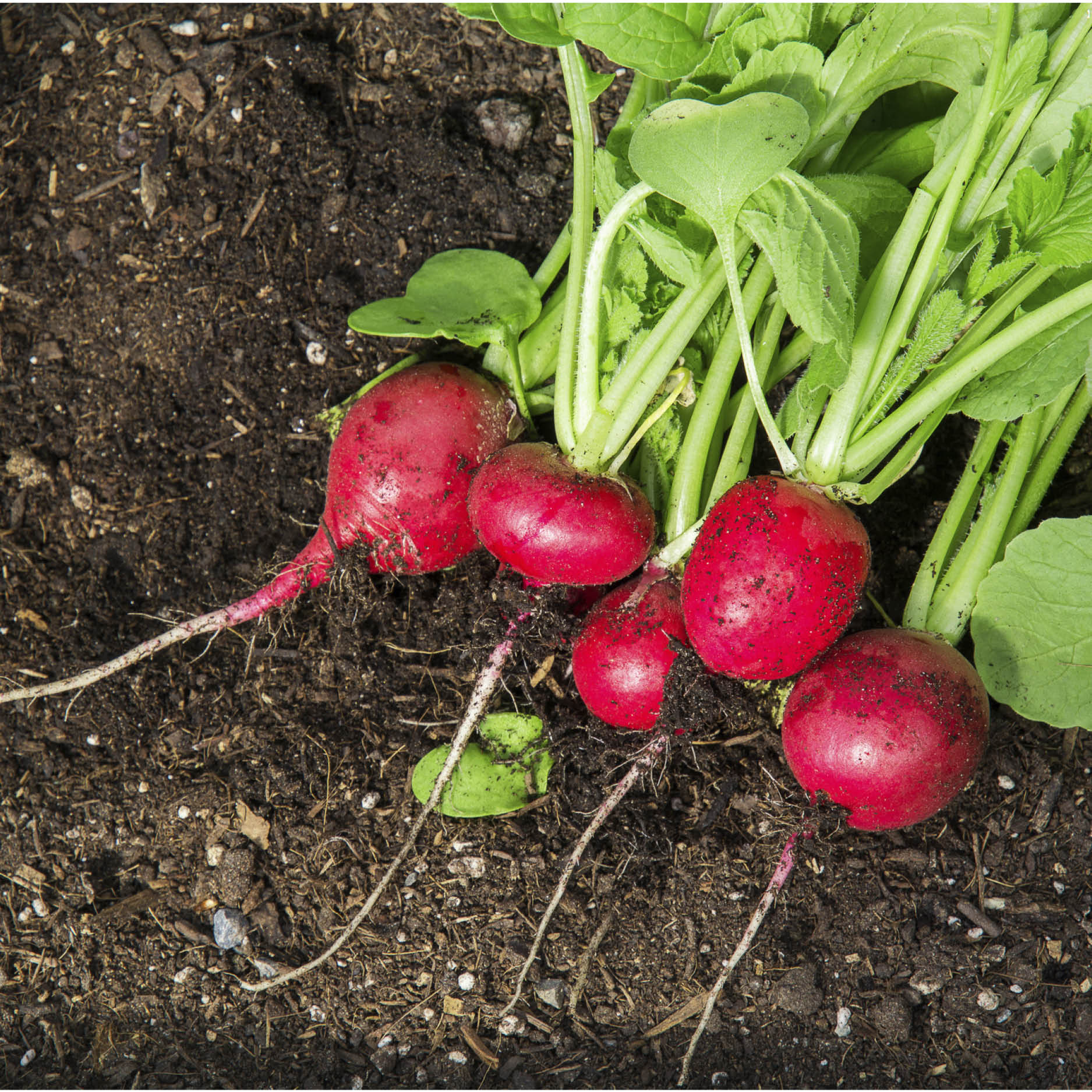Radish for breakfast?
2017-02-27T04:55:24+11:00
As you pull out summer vegies, PENNY WOODWARD suggests a quick-growing replacement.
There aren’t many vegies that can be planted pretty much all year round in most climates, but the radish is one. There are many different types, but the ones I’m talking about are those known colloquially as French radishes, and among these my favourite is the French breakfast radish (Raphanus sativus). This bite-sized treat is mild flavoured and was first introduced in Paris in 1879. The market porters there would eat these radishes with butter and salt as a mid-morning treat, hence the name.
As you pull out summer vegetables, think about replacing them with these fast-growing beauties. Or sow seed into a vacant corner or pot. Sow into any reasonable garden soil or potting mix in full sun to semi-shade, keep moist and thin to 5cm spacings once they have a few leaves. Add the thinned leaves to salad. Bulbs can be harvested after 4–6 weeks and if you want to make sure you have them on hand whenever you feel like one, then sow new seed every three weeks. These mildly spicey radishes make a delicious snack on their own, or dunked in a dip. Or you can emulate the French porters and cut it in half, spread with butter and sprinkle with salt. Yum! They are also, of course, delicious in salads or used as a garnish on a range of dishes. Young and older leaves also make a slightly spicey salad leaf.
If you want to save seed, look for the best-shaped and coloured bulbs and leave them to produce flower heads. They will grow quite tall so may need to be staked to stop them from falling over. Once in flower, like other plants in this family, they will be swarming with beneficial insects. After pollination, the green seed pods that form can be harvested and used raw in salad or pickled and used as a garnish, but make sure you leave enough to save the dried seed. If you want to collect seed that will grow true to type, then only grow and flower one variety at a time. Seed remains viable for about 5 years.







